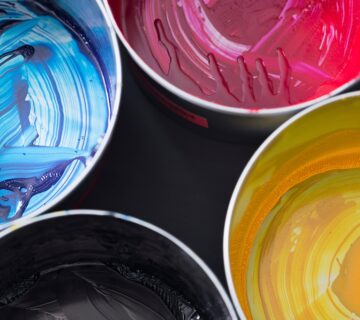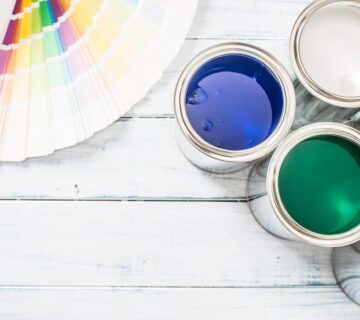Often when we paint our homes or create artwork, we wait for the paint to ‘dry’. But drying is just one part of the process. To truly understand how paint transforms from a liquid to a solid state on our walls or canvases, we need to delve into the science behind paint drying and curing. This blog will explore the complex processes that take place once paint is applied, providing a deeper understanding of what happens during this transformation. We’ll examine the chemical reactions involved, the environmental factors that can influence these processes, and the distinction between drying and curing, to give readers a full appreciation of the craftsmanship that goes into perfecting the paint we use every day.
Understanding Paint Drying
The Evaporation Phase
Drying, in the context of paint, primarily refers to the process of solvent evaporation. When paint is applied, it’s in a liquid form that makes it spreadable. This liquidity is due to the presence of a solvent, which can be water in latex paints or a type of oil in oil-based paints. As the paint is exposed to air, the solvent begins to evaporate. This is what we generally refer to as ‘drying’. It’s the first step toward achieving a solid, touchable surface.
Factors Influencing Drying Time
The time it takes for this process to occur depends on several factors, including the type of paint, the thickness of the application, environmental conditions like humidity and temperature, and air circulation. For instance, a thin layer of latex paint in a well-ventilated, warm room will dry much faster than a thick layer of oil-based paint in a cool, damp environment. Additionally, the presence of airflow can enhance the evaporation rate, while high humidity can retard it, prolonging the drying time.
The Curing Process
Chemical Reactions and Bonding
While drying is about the solvent evaporating, curing is a chemical process. This is where the paint undergoes a chemical reaction, typically through oxidation in the case of oil-based paints, or coalescence for latex paints. During curing, the paint’s molecules cross-link and bond to the surface and each other, forming a durable and solid film. This chemical transformation is critical for the paint’s long-term performance and resistance.
The Timeframe for Curing
Curing is a slower process than drying and can take several days to weeks. Cure time depends on the type of paint and conditions. During this time, the paint develops its full color and sheen, becomes more resistant to environmental factors, and achieves its final hardness and durability. The exact duration of curing is not just a matter of time but also the chemical nature of the paint itself and the environment in which it dries.
Why Curing Matters
The Importance of a Fully Cured Paint
Understanding the distinction between drying and curing is crucial, especially when it comes to handling the painted surface. A paint might feel dry to the touch but still be vulnerable to damage if it hasn’t fully cured. For instance, placing furniture against a wall that’s only dry, but not cured, can lead to the paint sticking or peeling. Full curing is essential for the paint to deliver the expected aesthetic and functional qualities.
Tips for Ensuring Proper Curing
It’s important to follow the manufacturer’s guidelines regarding drying and curing times. Maintaining adequate ventilation, controlling room temperature, and avoiding direct sunlight can facilitate optimal curing conditions. Also, it’s advisable to avoid washing or touching the painted surface until the curing process is complete. Patience during the curing process ensures that the painted surface reaches its maximum durability and finish quality.
Final Thoughts
The science behind paint drying and curing is a fascinating blend of chemistry and physics. Understanding these processes can enhance our patience and care when undertaking painting projects, ensuring the longevity and beauty of the finish. Remember, good things take time, and this is especially true in the world of paint. For more insights into the world of painting and decoration, visit our website at sisupainting.com and check out our blog at sisupainting.com/blog.





No comment